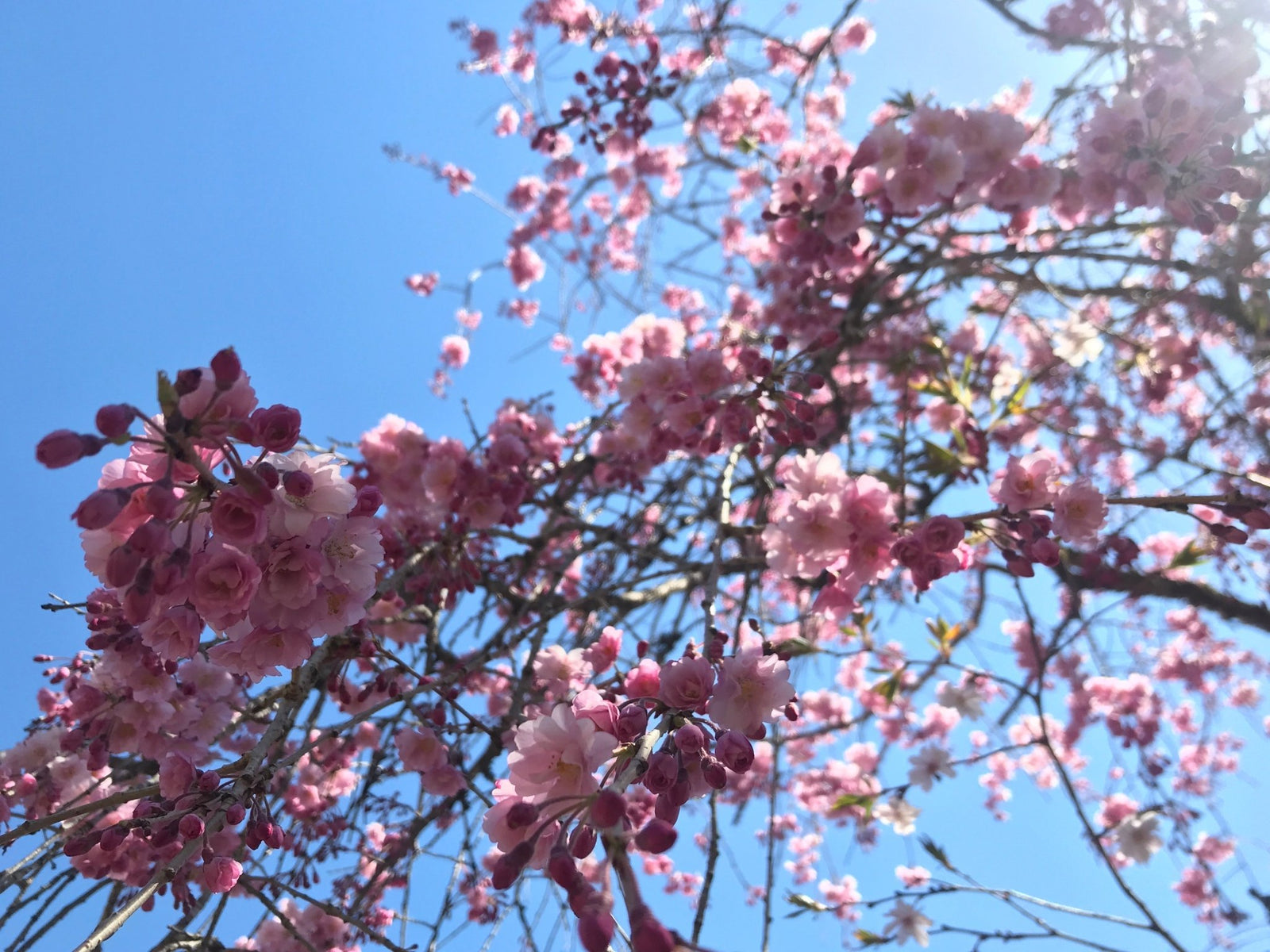(遅ればせながら)春分の日おめでとうございます!
新しい香りや植物の成長、緑や太陽の光、光に向かって伸びる花々など、何か楽しんでいますか?日本では、 春分の日(しゅんぶんのひ)は、春の訪れを告げ、自然と生き物の循環を畏敬の念と敬意をもって祝う国民の祝日となっています。
この時期はちょうど「お花見」の季節でもあり、家族や友人と様々な種類の桜、特にソメイヨシノの美しさを愛でるひとときです(幸子さんの「心で桜を感じ、食卓に桜を」もご覧ください)。実際、気象庁は今月22日に東京でソメイヨシノが満開になったと発表しました。残念ながら、今年は新型コロナウイルス感染症の影響で、桜の木の下での恒例の社交的な集まりは控えるよう強く推奨されています。主要な公園ではピクニックを禁止する柵が設置されていますが、もちろん、花は美しいパフォーマンスを続けてくれるでしょう!
 東京でソメイヨシノが開花。写真:岸田萌絵
東京でソメイヨシノが開花。写真:岸田萌絵
 Cerasus Campanulata (日本語: 寒緋桜 カンヒザクラ);写真提供: 梶原茶園
Cerasus Campanulata (日本語: 寒緋桜 カンヒザクラ);写真提供: 梶原茶園
大津波と地震の10周年
桜が咲き誇る中、2週間前の3月11日は、東北地方太平洋沖地震(マグニチュード9.0 )の10周年でした。この地震は東北地方に未曾有の被害をもたらしました。個人的には、あの年に出会った人々や思い出を改めて振り返りたい気持ちもありましたが、 2011年の漢字「絆」を思い出しました。これは人と人との繋がりを表しています。
2011年、国民投票で「今年の漢字」に「絆」が選ばれました。この悲痛な年、日本国民は国を挙げて、そして多くの国々からの支援を受けながら、地震と津波の被災者を支援しました。福島原発の放射能汚染の影響で、今もなお4万人以上が自宅に戻ることができていません。被災者は、特に心に深く刻まれた傷からの回復に苦闘しています。Yunomiの最新ニュースレターをまだ読んでいない方は、今月、この日を偲び、 ピースウィンズ・ジャパンへのマッチングファンド(最大10万円)を実施しています。
 宮城県気仙沼湾、2011年4月19日。撮影:岸田萌絵。
宮城県気仙沼湾、2011年4月19日。撮影:岸田萌絵。
 岩手県陸前高田市、2011年春。写真:西健三
岩手県陸前高田市、2011年春。写真:西健三
10年目の節目を迎え、ソーシャルディスタンスが求められる今の状況下で、私たちは皆、人との繋がりや触れ合いの不足、そして孤立感を強く感じています。一方で、家で過ごす時間が増えたことで、日本茶を飲む機会が増えた方もいらっしゃるかもしれませんね。そう、このパンデミックを通して、何か絆が深まったと感じませんか?家族、親しい友人、そしてもしかしたら日本の茶農家の方々との絆も深まったのではないでしょうか?この時代における「絆」という言葉の新たな解釈に、私はとても興味を持っています。
新茶シーズンまでカウントダウン!
最後に、前向きな気持ちで締めくくりましょう。春分の日、私は八十八夜(88日目)の半分(これを書いている時点では、まだ半分にも達していません!)に達したことに気づきました。八十八夜は新茶(新しいお茶/最初のフラッシュ)の季節の始まりを意味します。
改めておさらいすると、日本では「 八十八夜」は立春(つまり旧暦の2月2日または3日)から数えて88日目の夜を指します。西洋では、この時期はグラウンドホッグ・デー(グラウンドホッグの日)または聖ブリジット・デーとして知られています。日本では伝統的に、多くの人が農業に従事していました。そのため、八十八夜は、新茶の収穫や種まきを始め、農家にとって非常に忙しくなる時期を意味していました。
現在では、新茶は必ずしも八十八夜(5月2日頃)に収穫されるわけではありません。最初の摘み取り時期は、気象条件、茶園、地域、気候変動などによって異なります。実際、地域によっては最初の摘み取りが3月になることもあります。茶農家やお茶愛好家は今でも「八十八夜」という言葉を使い、一番茶は誰もが心待ちにしているものです。なぜなら、一番茶は最高のお茶とされているからです。一番茶は特別な新鮮さ、繊細さ、そして甘みがあり、夏の光へと誘う美しい呼び声です。茶の木が冬の間ずっと栄養を蓄えていたためか、他の収穫物よりも栄養価が高いのです…そう! 上島さん(上島製茶園)のような茶農家が戦士モードに入り始めるのはこの時で、 あゆみさん(ちっとらっつ)は収穫に忙しくなり、鳥のさえずりに耳を傾けるのを忘れてしまうのです。
春分は八十八夜(やしゅう)のちょうど中間点です。まだ月の周期が一周以上残っていますが、地球のリズムと調和した何かを楽しみに待つことができるのは、心地よく、心が安らぎます。母なる自然は時に非常に力強く、時に厳しいものですが、私は周囲に響き渡る春の新たなエネルギーに感謝しています。
 2011年春、3月11日の余波の中で咲く花々 。宮城県七ヶ浜町。写真は岸田萌絵氏による。
2011年春、3月11日の余波の中で咲く花々 。宮城県七ヶ浜町。写真は岸田萌絵氏による。


